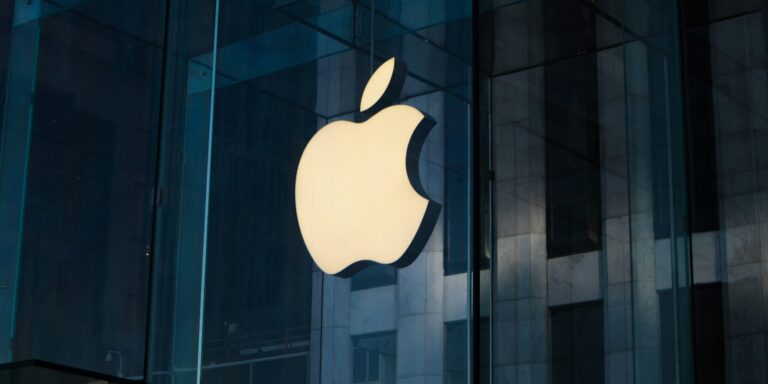Apple’s recent announcement of a $100 billion investment into U.S. manufacturing represents a monumental shift in the company’s operations and signals a broader commitment to bolstering domestic production capabilities. This move is especially significant because it is being made in alignment with President Trump’s “America First” economic agenda, which seeks to revive American manufacturing and bring jobs back to the U.S. It follows a similarly ambitious $500 billion investment that Apple made earlier in 2025, which not only included the construction of an AI server factory in Texas but also the creation of roughly 20,000 new jobs in research and development across the nation.
The announcement demonstrates Apple’s deepening focus on reshaping its manufacturing base. For a company that has been at the forefront of global technology for decades, this is more than just a business decision—it’s a reflection of broader geopolitical and economic trends that are reshaping global supply chains. Apple’s move is part of a greater shift in the technology industry, where more and more companies are reconsidering their dependence on international manufacturing and outsourcing.
Read Also: https://goldenstatereview.com/union-pacific-norfolk-southern-merger-reshapes-u-s-freight-landscape/
At the heart of this investment is the construction of an AI server factory in Texas, which underscores Apple’s increasing focus on the rapidly growing field of artificial intelligence. AI is poised to be one of the most transformative technologies of the 21st century, and Apple’s decision to build infrastructure in the U.S. around it signifies that the company is positioning itself not just as a leader in consumer electronics but also as a key player in the next wave of technological innovation. The AI server factory will likely become a central hub for Apple’s efforts to build its next-generation artificial intelligence capabilities, which could play a major role in the company’s products and services in the future.
In addition to the AI factory, the $100 billion investment is also expected to result in the creation of thousands of jobs across the U.S. While some of these will be in manufacturing—particularly in assembly and production lines—others will be high-skill positions in areas like software engineering, machine learning, and data science. Apple’s commitment to creating 20,000 research and development jobs nationwide through its previous $500 billion investment signals the company’s intent to drive technological advancements not just through new products but also by investing heavily in innovation and talent development in the U.S.
Apple’s expansion into U.S. manufacturing comes at a time when the global supply chain is being tested. With trade tensions between the U.S. and China, disruptions caused by the COVID-19 pandemic, and rising labor costs in many parts of Asia, many companies are rethinking their international operations. Apple, in particular, has been under pressure to diversify its manufacturing bases and reduce its reliance on China, where the majority of its products have historically been assembled. The shift toward U.S.-based manufacturing allows Apple to have more control over its production processes and mitigate the risks associated with political and economic instability in foreign countries.
Apple’s investment could have a ripple effect across the entire tech industry. As one of the largest and most influential companies in the world, Apple’s decisions often set the tone for other major corporations. It’s possible that other tech giants, including companies like Google, Microsoft, and Amazon, may follow suit and consider expanding their U.S. manufacturing capabilities. A trend of reshoring manufacturing jobs could gain momentum, driven by a combination of political incentives, rising costs in foreign manufacturing hubs, and the desire to be less reliant on global supply chains. Apple’s decision to invest heavily in the U.S. could, therefore, prompt other firms to re-evaluate their own supply chain strategies and look for ways to bring production back home.
The U.S. government has already taken steps to encourage reshoring through various policies and tax incentives, and Apple’s actions are likely to encourage further support for such initiatives. By investing in the U.S., Apple is not only responding to national policies but also playing a role in the development of a more resilient economy. The U.S. has long been a leader in technology, but in recent decades, many manufacturing jobs have moved abroad to countries with lower labor costs. Apple’s decision to bring manufacturing back to the U.S. could be a catalyst for other industries to follow suit and could contribute to the long-term revitalization of American industrial sectors.
Furthermore, Apple’s focus on innovation and research and development within the U.S. is likely to contribute to the growth of new technologies that will shape the future of the global economy. The company’s investment in AI and other cutting-edge fields could ensure that the U.S. remains at the forefront of technological progress. These advancements could have wide-ranging effects, from improving productivity in industries like healthcare, finance, and transportation to driving the development of next-generation consumer products. By fostering a culture of innovation through job creation and technology development, Apple’s $100 billion investment has the potential to contribute to the overall economic growth of the U.S.
In terms of job creation, Apple’s investment also offers significant benefits to local economies. With new factories and R&D centers being established in various states, Apple’s presence could bring jobs to areas that may have been previously overlooked in the broader tech industry. Apple’s earlier commitment to creating jobs in Texas, for instance, could revitalize local economies by providing employment opportunities in regions where the tech industry has not been as prominent. Moreover, the increased focus on local supply chains—driven by this shift toward domestic manufacturing—could lead to a greater demand for local suppliers, further contributing to the economic development of communities around these new facilities.
Another significant aspect of this investment is the environmental impact. Apple has been a vocal proponent of sustainability, aiming to achieve carbon neutrality across its entire supply chain and product life cycle. As the company brings more manufacturing and R&D jobs to the U.S., it is likely that it will continue to prioritize green technologies and sustainable practices in its operations. This could include using renewable energy to power factories, sourcing materials responsibly, and continuing to reduce the environmental footprint of its products. Apple’s focus on sustainability aligns with broader global goals to tackle climate change and reduce carbon emissions, and the company’s leadership in this area could inspire other tech companies to adopt similar strategies.
The announcement of this $100 billion investment is a testament to Apple’s long-term vision for its business and its commitment to supporting the U.S. economy. While it remains to be seen how other tech giants will respond, Apple’s actions could serve as a model for reshoring manufacturing in the tech sector. In the years to come, the tech landscape in the U.S. could look significantly different as more companies invest in domestic production and innovation, positioning the U.S. as a leader in the technologies of the future.
Ultimately, Apple’s $100 billion investment is not just about increasing its own production capacity—it’s about transforming the broader economic and technological landscape. With an emphasis on manufacturing, innovation, and job creation, Apple is not only contributing to its own future growth but also playing a pivotal role in shaping the future of U.S. industry and the global economy.



